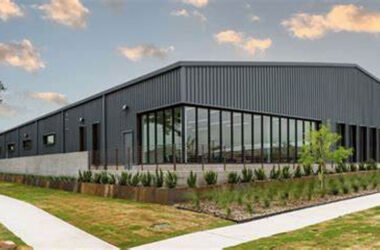A whole house repipe is a major home improvement project that can significantly enhance your plumbing system’s efficiency and reliability. Whether you’re replacing aging pipes, upgrading from galvanized to copper or PEX, or dealing with frequent leaks and water pressure issues, GreaseCycle Recycling notes that understanding what to expect can help you prepare for the process with confidence. Here’s a step-by-step breakdown of what happens during a repiping project and how to make the experience as smooth as possible.
Initial Consultation and Inspection
Every whole house repipe begins with an initial consultation. A professional plumber will visit your home to assess your existing plumbing system and identify problem areas. They’ll check for common issues like leaks, corrosion, and low water pressure, as well as consider the age and material of your current pipes.
What to Expect:
- A thorough inspection of visible pipes, fixtures, and potential problem spots.
- A discussion about your home’s water usage and any concerns you have (e.g., discoloration, inconsistent water temperature).
- Recommendations for pipe materials (PEX, copper, or a combination) based on your budget, water quality, and durability needs.
Tip: Prepare any questions you may have regarding costs, timeframes, and materials so you can make an informed decision.
Planning and Preparation
Once you’ve agreed on the scope of the project, the plumbing team will plan the repiping work. This includes creating a detailed timeline, sourcing materials, and identifying where to make necessary access points in your walls, floors, or ceilings.
What to Expect:
- A project timeline with estimated start and completion dates.
- Clear instructions on how to prepare your home, including whether you need to move furniture or protect belongings near plumbing access points.
- Potential permits, especially if your local municipality requires them for major plumbing work.
Tip: Ask if your plumbing contractor will handle the permits or if you’ll need to apply for them yourself.
Shutting Off the Water Supply
Before the repiping work begins, your home’s water supply will be temporarily shut off. Depending on the complexity of the project, this could last for a few hours or several days. Many plumbers offer temporary water solutions, such as providing access to water in one part of the home during the project.
What to Expect:
- Advance notice of when the water will be turned off and for how long.
- Instructions on storing water for drinking, cooking, and sanitation.
- Limited access to fixtures like sinks, showers, and toilets during specific phases of the project.
Tip: Consider staying with family or friends if the repiping is expected to take several days and disrupt daily routines.
Demolition and Pipe Removal
To access the existing pipes, plumbers may need to make small cuts in your drywall, flooring, or ceilings. They’ll then carefully remove the old pipes while minimizing damage to the surrounding structure.
What to Expect:
- Controlled demolition, with protective coverings placed over furniture and floors to minimize mess.
- Noise from cutting, drilling, and pipe removal, which may be disruptive during work hours.
- Responsible disposal of old piping materials.
Tip: Ask your contractor how they plan to minimize mess and whether they’ll repair any holes or damaged drywall after the project.
Installing New Pipes
This is the core part of the repiping project. The plumbers will install new pipes, connect them to your fixtures, and secure them within walls or floors. If you’ve opted for PEX piping, installation is typically faster due to its flexibility, while copper piping may require additional cutting and soldering.
What to Expect:
- Careful placement of pipes to ensure proper flow and minimal future maintenance.
- Regular inspections during installation to ensure all connections are leak-free.
- Testing for water pressure and functionality before moving on to the next phase.
Tip: Ask your plumber to walk you through the benefits of the material you’ve chosen, whether it’s PEX or copper, so you understand its long-term performance.
System Testing and Inspection
Before the job is complete, the plumbing team will test the new pipes to ensure they are working properly. This includes checking for leaks, adequate water pressure, and proper temperature control. In some cases, an official city inspection may be required to approve the work.
What to Expect:
- A final test of every fixture, including faucets, showers, toilets, and water-based appliances.
- Verification that the new system meets local codes and safety standards.
- A possible follow-up inspection by local authorities, if applicable.
Tip: Be present during the testing phase so you can voice any concerns or ask for adjustments before the project is finalized.
Repairing Walls and Clean-Up
Once the new pipes have been successfully installed and tested, the plumber will seal any access points made during the project. This typically involves patching drywall, repainting, or repairing floors as needed.
What to Expect:
- Temporary patching or permanent repairs, depending on the agreement with the contractor.
- A thorough cleanup of debris, dust, and old materials.
- An explanation of any remaining tasks or follow-up appointments, if needed.
Tip: If your plumbing contractor doesn’t offer wall repairs, plan to hire a professional or do the patchwork yourself.
Final Walkthrough and Maintenance Tips
Before leaving, the plumbing team will conduct a final walkthrough of your home, explaining how the new system works and offering maintenance advice. They’ll provide you with documentation about the new pipes, warranties, and any follow-up services you may need.
What to Expect:
- A walkthrough showing key areas, shut-off valves, and any new features.
- Maintenance tips, such as how to prevent pipe freezing or mineral buildup.
- A copy of the project details, including any warranties on parts or labor.
Tip: Keep all paperwork and maintenance instructions in a safe place for future reference.
Conclusion: A Worthwhile Investment in Your Home’s Future
A whole house repipe may seem like a major undertaking, but with the right preparation and professional guidance, it can be a smooth process that leaves you with a more reliable plumbing system. By replacing old, corroded pipes with modern materials, you’ll enjoy better water pressure, cleaner water, and fewer plumbing issues for years to come.
With proper planning and an experienced team, a whole house repipe can be a stress-free upgrade that enhances the comfort and value of your home.








